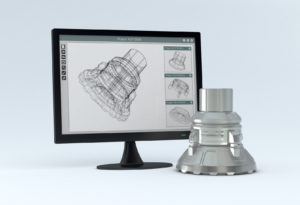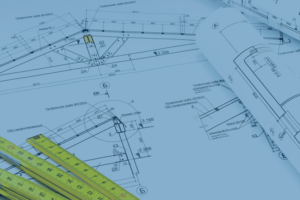Chris Lindenberg studied GD&T for decades while working in manufacturing. He has taught and written about GD&T for nearly ten years.
He writes this GD&T blog for Metalcraft because he says, "I’ve spent the better part of my career arguing the finer points of GD&T. These discussions are ongoing for any company that uses GD&T to manage their part geometry and control their parts’ allowable deviations from design models and standards."
To GD&T Or Not To GD&T: Part I
Does GD&T Make Things Too Complicated? I write this blog each month and try to focus on how to convey to our readers what GD&T is and how we can better understand it. There’s always a question about how to apply and use a tolerancing system that is supposed to apply to all the mechanical […]
Read MoreLearning the World of GD&T: Part II
This month, let’s review some definitions and rules. Let’s imagine that we’re going to make a simple part in our machine shop. The foreman returns to the quality lab or machine shop from a morning production meeting holding a customer’s drawing for a small shaft that will be sold to a customer in the aerospace […]
Read MoreLearning the World of GD&T: Part I
I usually write blogs about how the symbols and rules that govern GD&T should be translated because it’s a system based on rules and definitions. What does parallelism mean? What rules govern datums used at maximum material boundaries? What exactly differentiates a regular feature of size from an irregular one? These questions are examples of […]
Read MoreGD&T: Different Strokes for Different Folks
GD&T is growing more common in our industry, which burdens us with forming a working knowledge of its convention. How we use and translate GD&T changes over the decades as new governing bodies take oversight and release new revisions. The one constant, however, is the great diversity of opinion on how to employ and translate […]
Read MoreApplying and Using GD&T in Everyday Shop Practices
Today’s manufacturing world is full of challenges and opportunities. Our shop technicians change hats hour by hour to download programs and accomplish their setups. Among other tasks, they pull material, load tools, and edit and rewrite code. They measure, adjust, and change offsets. They fill out their in-process inspection data and submit the first […]
Read MoreDefinition of Terms: Characteristic Symbols
This month’s installment of our definition of terms will be about characteristic symbols. These symbols are what most people in the manufacturing world recognize as being what GD&T is all about and, from one perspective that’s true. Those Weird Hieroglyphic-Looking Things When the average worker in our manufacturing world first sees an example of GD&T, […]
Read MoreDefinition of Terms- Features of Size: Regular and Irregular
This month our definition of terms will look at regular and irregular features of size. Looking back we can see that a previous installment of our “definition of terms” looked at “features and features of size” which discussed features of size as they relate to parts and our larger scheme of geometric tolerancing. This discussion […]
Read MoreDefinition of Terms: Spherical Tolerance Zones
In our last blog post, we looked at the six common tolerance zones that appear in today’s engineering drawings. While these six make up the broad majority of tolerance zones in geometric dimensioning and tolerancing (GD&T), you may encounter another zone in a given tolerance scheme—the spherical tolerance zone. The American Society of Mechanical Engineers […]
Read More














